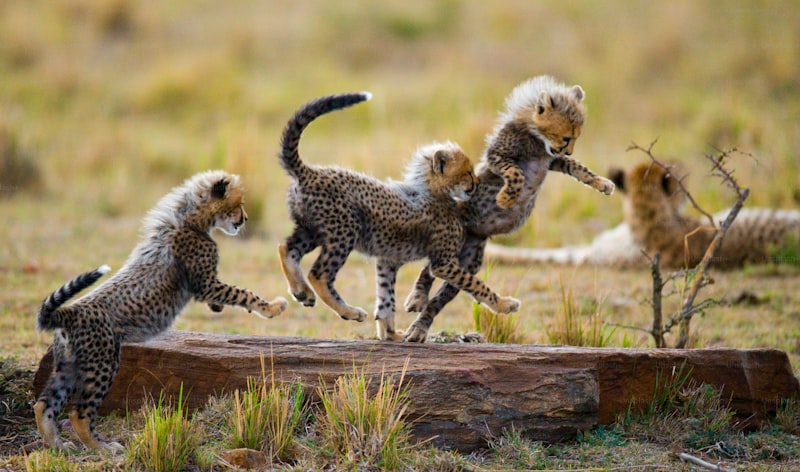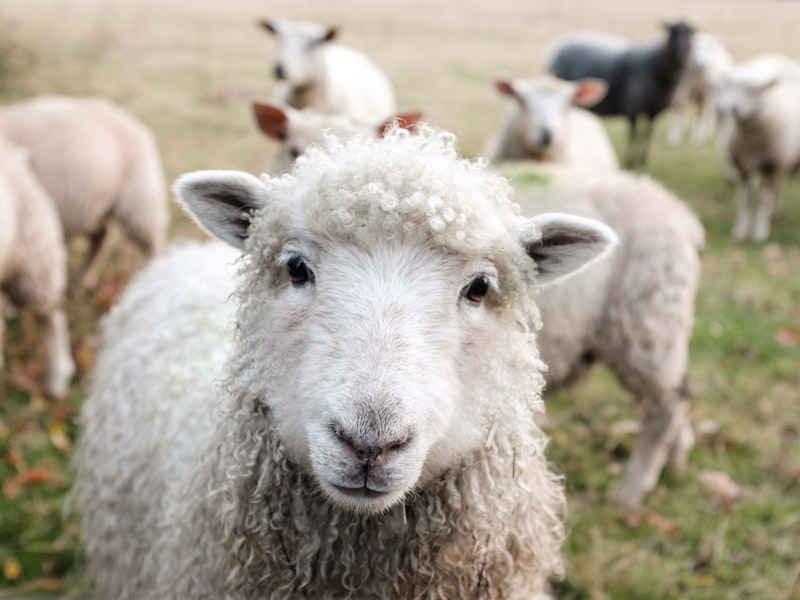Have you ever wondered how animals get around in their daily lives? It’s not always as straightforward as walking or running. From the elegant slithering of snakes to the graceful gliding of flying fish, the diversity of animal locomotion is truly astonishing.

Take the gecko, for instance. These incredible creatures can scale vertical walls and even walk across ceilings with ease, thanks to millions of tiny hairs on their feet that create van der Waals forces, allowing them to stick to surfaces without any effort.
Then there’s the octopus, a master of disguise and movement. With its soft body and eight flexible arms, an octopus can squeeze through impossibly small openings and change its color and texture to blend seamlessly with its surroundings. Watching an octopus move is like witnessing a living puzzle solve itself.
On the opposite end of the spectrum, consider the kangaroo. Known for its powerful hind legs and unique hopping gait, the kangaroo can cover vast distances efficiently, conserving energy while bounding across the Australian outback. It’s a reminder of how adaptation to specific environments can lead to extraordinary forms of movement.
Meanwhile, the flying squirrel defies gravity with its gliding ability. By stretching the skin between its front and back legs, the flying squirrel can leap from tree to tree, gliding through the air as gracefully as a paper airplane. It’s a marvel of aerodynamics in the animal kingdom.
And let’s not forget about the penguin’s waddle. While it may seem comical, this distinctive walk helps penguins navigate icy terrain with minimal effort. By keeping their feet close together and rocking from side to side, penguins maintain balance and conserve heat in their harsh Antarctic environment.
These examples highlight just a few of the countless ways animals have adapted to their environments through unique forms of locomotion. Whether it’s climbing, swimming, flying, or hopping, each method of movement reflects millions of years of evolution and specialization. Next time you observe an animal in motion, take a moment to appreciate the incredible diversity and ingenuity of nature’s designs.
Nature’s Marvels: 7 Animals With Surprisingly Unique Ways of Getting Around
Have you ever marveled at the incredible diversity of nature? From the depths of the ocean to the vast savannas, animals have evolved some truly remarkable ways of getting around. Let’s dive into the fascinating world of seven creatures that have mastered unique modes of locomotion.
-
Flying Fish: Imagine a fish that can fly! Flying fish have streamlined bodies and specially adapted fins that allow them to glide above the water’s surface. They propel themselves out of the water at high speeds, using their wing-like fins to glide gracefully over distances of up to 200 meters. It’s nature’s very own aerial acrobatics show!
-
Geckos: These incredible lizards have sticky toe pads that enable them to effortlessly climb smooth vertical surfaces, including glass windows and even ceilings. Geckos use van der Waals forces, a type of intermolecular attraction, to cling to surfaces without the need for traditional adhesive substances.
-
Kangaroos: Australia’s iconic marsupials are known for their powerful hind legs, which allow them to hop at high speeds and cover vast distances with minimal energy expenditure. Kangaroos can reach speeds of up to 56 kilometers per hour (35 mph) while hopping, making them efficient and agile travelers in their native habitats.
-
Honeybees: These tiny insects have a complex social structure and an incredible navigation system. Honeybees perform a unique “waggle dance” to communicate the direction and distance of food sources to their hive mates. By interpreting the dance’s movements, other bees can pinpoint the exact location of pollen and nectar-rich flowers several kilometers away.
-
Octopuses: With their soft bodies and eight flexible arms, octopuses are masters of underwater movement. They propel themselves by expelling water through a muscular tube called a siphon, allowing them to swim swiftly and change direction rapidly. Some octopus species can even walk along the ocean floor using their arms.
-
Sidewinder Rattlesnakes: Found in sandy deserts, sidewinder rattlesnakes have developed a unique sidewinding motion to traverse loose sand without sinking. By moving sideways and lifting parts of their body off the ground, these snakes minimize contact with the hot desert sand and reduce friction, enabling efficient movement in harsh environments.
-
Hummingbirds: These tiny birds are known for their incredible agility and hovering abilities. Hummingbirds can beat their wings at an astonishing rate of up to 80 times per second, allowing them to hover in mid-air while sipping nectar from flowers. Their unique wing structure and rapid wing beats create lift and enable precise flight maneuvers.
Nature never ceases to amaze with its endless creativity and adaptability. These seven animals showcase just a glimpse of the diversity of locomotion strategies that have evolved across different habitats and environments. Whether soaring through the skies, hopping across landscapes, or swimming through oceans, each of these creatures demonstrates the marvels of natural engineering at its finest.
From Glide to Gallop: Exploring the Diversity of Animal Movement
Have you ever marveled at the incredible ways animals move? It’s a mesmerizing spectacle of nature, where each species has its own unique way of getting around. From the effortless glide of a bird soaring through the sky to the thundering gallop of a horse across open fields, animal movement spans a wide spectrum of techniques and adaptations.
Let’s start with the avian world, where birds showcase some of the most graceful movements known to us. Take the albatross, for instance. With its enormous wingspan, it can glide for hours over vast ocean distances, hardly needing to flap its wings. This efficient use of air currents allows it to conserve energy while covering incredible distances in search of food.
On the opposite end of the spectrum, we have the gallop—a mode of movement synonymous with speed and power. Horses exemplify this perfectly. Their powerful legs propel them forward in a rhythmic, synchronized motion that makes them one of the fastest land animals. The gallop isn’t just about speed; it’s about stamina and strength, essential for survival in the wild.
But movement diversity doesn’t stop there. Consider the agile slither of a snake, a mesmerizing dance that allows it to navigate diverse terrains with ease. Snakes use their unique muscular structure to propel themselves forward, adapting their movement to environments ranging from dense forests to sandy deserts.
Then there’s the aquatic realm, where marine mammals like dolphins and whales showcase their mastery of underwater movement. Dolphins, with their streamlined bodies and powerful tails, glide effortlessly through the water, using echolocation to navigate and hunt with precision. Whales, on the other hand, employ their massive tails to propel themselves through oceans, demonstrating a majestic blend of power and grace.
From the sky to the land and beneath the waves, animal movement offers a window into the diversity and ingenuity of nature. Each species has evolved specific techniques that maximize efficiency and survival in their respective habitats. By studying and appreciating these movements, we gain a deeper understanding of the natural world and the incredible adaptations that have shaped it over millennia.
The Art of Animal Locomotion: 10 Fascinating Ways Creatures Navigate Their World
-
Flight of Birds: Birds are masters of the skies, utilizing their wings for powered flight. From the effortless glide of eagles to the intricate aerial maneuvers of hummingbirds, flight enables them to access food sources and evade predators with grace.
-
Swimming Wonders: Beneath the waves, marine animals like dolphins and sharks showcase streamlined swimming techniques. Their sleek bodies and powerful tails propel them through water, allowing for efficient hunting and migration across vast ocean expanses.
-
Land Bound: Terrestrial locomotion varies widely among animals. Quadrupeds like cheetahs sprint at incredible speeds, utilizing long, muscular limbs for explosive bursts of movement, while elephants lumber with surprising agility despite their size.
-
Arboreal Acrobats: Primates like gibbons and spider monkeys are adapted for life in the trees. Their prehensile tails and nimble limbs allow for swinging effortlessly from branch to branch, showcasing agility that rivals any gymnast.
-
Burrowing Expertise: Creatures like moles and rabbits have specialized in burrowing through soil. Their strong claws and compact bodies enable them to tunnel efficiently, creating intricate underground networks for shelter and protection.
-
Gliding Mastery: Some animals, such as flying squirrels and sugar gliders, have evolved to glide through the air. They use flaps of skin between their limbs to glide from tree to tree, navigating forest canopies with remarkable ease.

Creeping and Crawling: Insects and reptiles employ a myriad of crawling techniques. From the scuttling of spiders to the slithering of snakes, their adaptations allow them to traverse diverse landscapes, exploiting every niche.
-
Jumping Marvels: Grasshoppers and kangaroos are known for their incredible jumping abilities. Powerful hind legs act like springs, propelling them over long distances or to escape threats in a single bound.
-
Sailing on Currents: Marine creatures like jellyfish and plankton drift with ocean currents. Their gelatinous bodies move effortlessly through water, carried by currents that dictate their journey across vast distances.
-
Camouflaged Movement: Predators like chameleons and octopuses utilize camouflage for stealthy movement. They blend seamlessly into their surroundings, allowing for ambush attacks or evading detection from prey.
Each method of animal locomotion is a marvel of evolution, finely tuned to meet the challenges of survival in their respective habitats. Whether soaring through the air, gliding over landscapes, or navigating underwater depths, animals demonstrate an unparalleled diversity of movement that continues to fascinate and inspire.
Beyond Walk and Run: Uncovering the Lesser-Known Methods Animals Use to Travel
Take the gliding prowess of flying squirrels, for instance. These arboreal acrobats use flaps of skin called patagia to glide from tree to tree, effortlessly traversing distances that would challenge land-bound creatures. Their aerial maneuvers resemble those of skilled pilots navigating through dense forests.
Beneath the waves, marine creatures like jellyfish employ a different strategy altogether. Propelled by ocean currents, these ethereal beings drift gracefully, their movements dictated by the ebb and flow of the sea. It’s a serene ballet that belies the complexity of hydrodynamics shaping their journey.
Meanwhile, burrowing animals such as naked mole-rats tunnel through earth with remarkable efficiency. Their subterranean highways, complete with chambers for living and storage, span vast networks underground. It’s a feat of engineering where darkness and soil are sculpted into pathways of survival and security.
In the expansive savannas of Africa, the cheetah’s sprinting prowess is legendary. Yet, its cousin, the serval, employs a different hunting tactic altogether. This feline relies on its exceptional hearing to detect prey rustling in tall grass, pouncing with precision akin to an arrow shot from a bow.
Above ground, some insects utilize spring-loaded legs to catapult themselves forward, achieving distances many times their body length. This burst of energy allows them to evade predators or capture prey in the blink of an eye, showcasing nature’s efficiency in locomotion.
Ingenious Adaptations: How Evolution Shaped Animals’ Diverse Modes of Movement
Consider the majestic eagle, soaring high above with outstretched wings. Its ability to glide effortlessly on air currents is a marvel of aerodynamic design honed through generations. Evolution has endowed birds with hollow bones, reducing weight without sacrificing strength, allowing them to achieve the grace and precision in flight that we admire today.
On land, the agile cheetah embodies the pinnacle of speed and agility. Every aspect of its physique, from its long, muscular limbs to its flexible spine, is finely tuned for explosive bursts of acceleration. Evolution has sculpted the cheetah into the ultimate sprinter, enabling it to chase down prey with unmatched swiftness across the African savannah.
In contrast, aquatic environments have shaped animals like dolphins into masters of underwater agility. Their streamlined bodies and powerful tails propel them through the depths with remarkable efficiency. Evolution has equipped dolphins with fins that act as hydrodynamic foils, allowing them to maneuver swiftly and navigate complex underwater terrain effortlessly.
Even in the realm of insects, evolution has fostered remarkable adaptations in movement. Take the agile grasshopper, capable of leaping many times its body length in a single bound. Its hind legs are equipped with powerful muscles and specialized joints that store and release energy like a coiled spring, propelling it into the air with astounding force and precision.
Frequently Asked Questions
What are the adaptations that allow octopuses to move and camouflage themselves?
Discover how octopuses use specialized adaptations like their flexible bodies, suction cups, and chromatophores to move gracefully and camouflage seamlessly in their underwater environments.
What is bipedal locomotion and which animals exhibit it?
Learn about bipedal locomotion and discover which animals exhibit this unique way of moving. Bipedal locomotion refers to the ability of animals to walk on two legs instead of four. This adaptation is seen in humans, as well as in certain birds like ostriches and penguins, and some primates such as chimpanzees and gorillas.
How do snakes move without legs?
Discover how snakes move without legs and explore the fascinating mechanics of their slithering motion. Learn about the unique muscle contractions and body coordination that enable snakes to glide smoothly across various surfaces.
What are some examples of animals with unique locomotion abilities?
Explore fascinating examples of animals with unique locomotion abilities, from the swift flight of hummingbirds to the graceful swimming techniques of dolphins and the agile climbing skills of geckos. Discover how these adaptations help them thrive in diverse environments.
How do flying fish achieve flight over water?
Flying fish achieve flight over water by rapidly beating their tail fins against the water surface, generating enough thrust to lift their body out of the water. Their streamlined body and large pectoral fins then allow them to glide above the surface, using wind currents to extend their flight.


